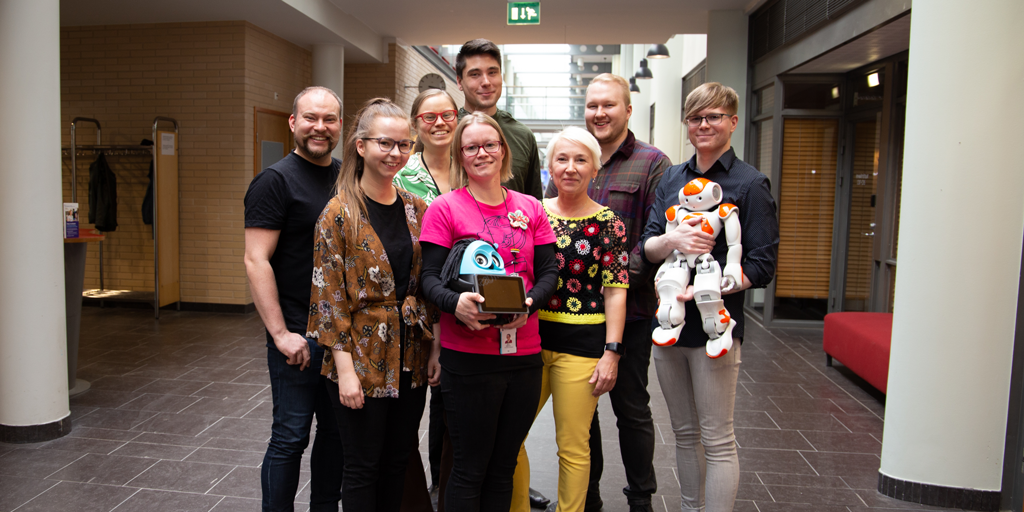Last spring students of Tampere University got acquainted with the use of teaching robots in schools in Tampere. The robots have been developed by startups, in cooperation with the City of Tampere. Based on the sutends’ field research, they suggested new concepts and development ideas for the startups. The cooperation benefited the companies, the City and Tampere University.
The auditorium of Tampere University’s Hervanta campus has a dense atmosphere. International students of User Experience in Robotics will present the results of their group work in a three-hour final seminar. Student groups have designed concepts related to human-centered robotics for client companies and evaluated their functionality in the right environment.
Johanna Ylitervo, Harri Halonen, Antero Mäkinen and Petri Kreus had been tasked with thinking about developing the language teaching robot Elias for pre-school education. Students observed Elias’s use at the local school and interviewed teachers. They then created a short lesson and coded it. On the basis of the fieldwork, the students were also able to give the company that developed Elias, Utelias Technologies, ideas for further development.
For example, our group noticed that teachers should be able to direct Elias to give positive feedback to the child, even if the child does not utter the word correctly, says Petri Kreus, and continues:
Young children may have difficulty pronouncing all letters correctly, but they too need positive feedback to practice.
The founder of Utelias Technologies Johanna Hemminki found the students’ idea good. The company will add an incentive button to Elias.
The cooperation was fruitful and we got a lot of good ideas from the students.
The language teacher Nina Pirttinokka, who uses Elias, is also pleased with the ideas and cooperation provided by the students.
I received a different, objective perspective from the students on Elias’ use in language teaching with young children. It’s great to see that there are young people who are really enthusiastic about working hard and with heart.
The math robot presented the seller
Students Eero Ojanperä and Janne Salminen were assigned to design discussions for the mathematical robot Ovobot. There was a desire to develop Ovobot to better suit young students. Students interviewed Jussi Wright, the inventor of Ovobot, teachers and children at local school. Based on their discussions and observations, Salminen and Ojanperä decided to test whether Ovobot could be used in an imaginary shopping situation. In the test situation, the children talked about shopping with the owl robot, which was the seller. Janne Salminen coded real-time owl robot answers for children. Testing the concept revealed surprising things.
The children thought the problem was that the owl couldn’t give candy or take the money, says Eero Ojanperä.
Testing in the right situations and environments opens students’ understanding of the human-robot interaction. University Lecturer Aino Ahtinen believes that the cooperation is beneficial for students, companies and the City of Tampere.
With this course, students can test their ideas and methods in the field to learn from experiments. Testing gives companies fast and cost-effective information on what’s worth developing in the future. Also teachers learn new things from each project, because each all of them are different, says Ahtinen.
Read more about the development of robot teacher in Tampere:
Smart Tampere: robot teacher experiments and development
The robot teachers learning emotions (Reuters, 31 May 2019)
Techno teachers: Finnish school trials robot educators (Reuters, 27 March 2018)
